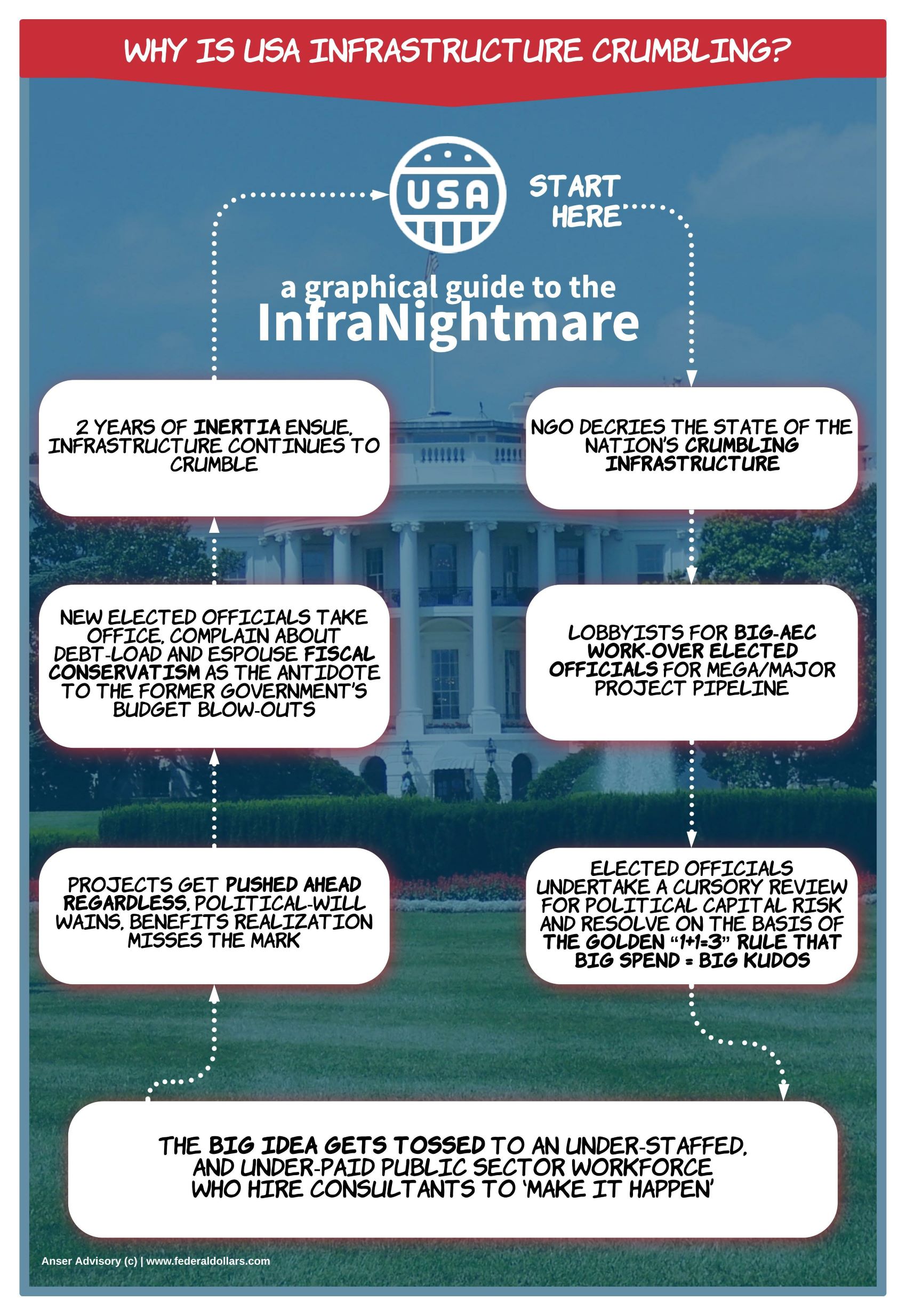The American Rescue Plan Act (2021) has been heralded by many as the answer to turning the tide on a tumultuous period for the US economy. It takes the most cursory google search to see thousands of articles opining and number crunching on the likelihood of ARPA benefits being realized, yet most fall short of acknowledging the multi-trillion dollar¹ elephant in the room.
How did we end up here?

It's time to get real about our infrastructure health.
Infrastructure deserves to be more than a political hot potato or seductive sound bite. Infrastructure is complex, expensive and nuanced – and yet, it seems many levels of government believe that their role in infrastructure is optional.
Systemic inefficiency and red-tape are furring the arteries of US infrastructure. Our nation is living on the edge of a life-threatening heart-attack.
Adam Shaw Tweet
And so, the elephant? The US is not going to solve it’s high cholesterol red-tape diet by throwing more money at the problem. To meaningfully turn around our nation’s trajectory on infrastructure the Administration must set the example for all to follow – a strict regime of cutting red-tape habits, moving more (getting the nations heart rate up) and driving our health through professional intervention and lasting lifestyle changes to our systems of governance, funding and procurement.
I – of course – have a few ideas on how to achieve this, but that’s the subject of another article.
[1] ASCE Infrastructure Report Card- 2021-IRC-Executive-Summary-1.pdf (infrastructurereportcard.org)
